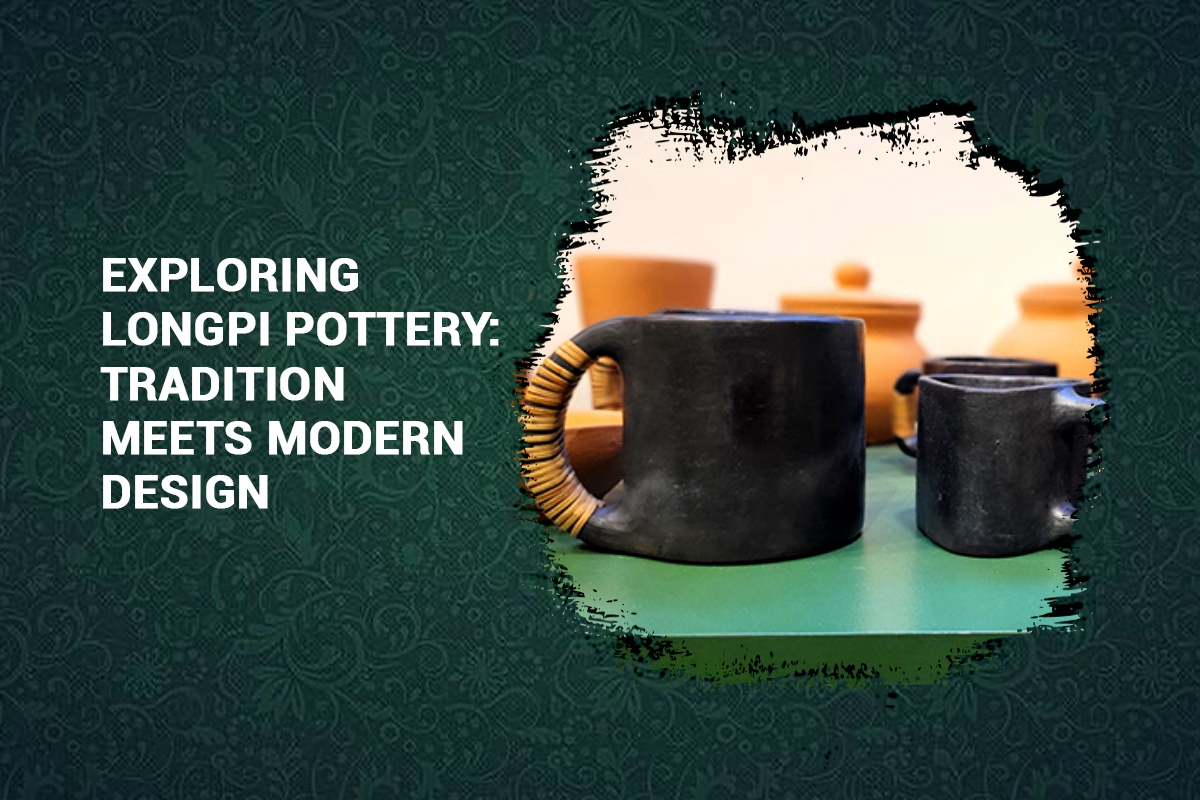Crafted through Flames: The Enduring Beauty of Longpi Pottery
Nestled in the northeastern region of India, amidst the lush hills and tranquil landscapes of Manipur, lies an art form that embodies tradition, resilience, and cultural wealth, Longpi pottery. Originating from the quaint village of Longpi in Manipur, this ancient craft has endured through generations, preserving its distinctive techniques and aesthetic appeal. Longpi pottery finds its roots in the Tangkhul Naga tribe of Manipur, renowned for their skill in working with natural materials. The pottery is crafted from a unique blend of two primary elements: weathered rock known locally as ‘serpentinite’ and specialized clay sourced from nearby riverbeds. These materials are carefully mixed by hand to create a pliable mixture, which serves as the foundation for the exquisite black pottery that defines Longpi craftsmanship.
Creating Longpi pottery is a meticulous and labor-intensive process, passed down orally from older artisans to the younger generation. Artisans begin by kneading the clay and serpentinite mixture to achieve the desired texture, ensuring it is both flexible and durable. Using traditional tools such as wooden paddles and molds, they shape the pottery by hand, preserving its distinctive forms and contours.
Following shaping, Longpi pottery undergoes a unique firing process distinct from conventional pottery techniques. Instead of using a potter’s wheel or glazing methods, it is fired over a fire fueled by wood and dry leaves. This gradual and controlled heating transforms the clay and serpentinite mixture into its characteristic deep black color, enhancing its strength and imparting a natural sheen and rustic charm.
Beyond its visual appeal, Longpi pottery holds profound cultural significance for the Tangkhul Naga community. Traditionally utilized for cooking and storing food, these pots are believed to enrich the flavor of dishes while maintaining their nutritional value. They play integral roles in rituals, ceremonies, and daily life, symbolizing the tribe’s deep connection to nature and ancestral traditions.
In recent years, Longpi pottery has gained recognition beyond Manipur, admired for its eco-friendly qualities and distinctive aesthetics. Artisans have adapted traditional designs to create modern pieces like vases, bowls, and decorative items, appealing to diverse tastes while honoring the essence of the craft. This adaptation has not only sustained the livelihoods of local artisans but also ensured the preservation of this ancient craft in an evolving world.
Efforts are actively underway to preserve and promote Longpi pottery as a cultural heritage. Artisan cooperatives and governmental initiatives support skill development, market access, and awareness campaigns, safeguarding the legacy of the craft for future generations. International recognition and exhibitions further underscore the cultural value of Longpi pottery, highlighting it as a symbol of India’s rich artisanal heritage.
Longpi pottery stands as a testament to the ingenuity, craftsmanship, and cultural heritage of the Tangkhul Naga tribe in Manipur. From its humble origins in a remote village to its recognition on national and international platforms, this ancient craft continues to inspire admiration with its beauty and resilience. As it endures through the currents of time and modernity, Longpi pottery remains a beacon of tradition, bridging generations through its timeless allure and enduring craftsmanship.

